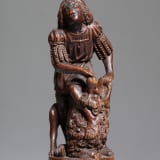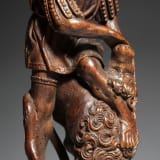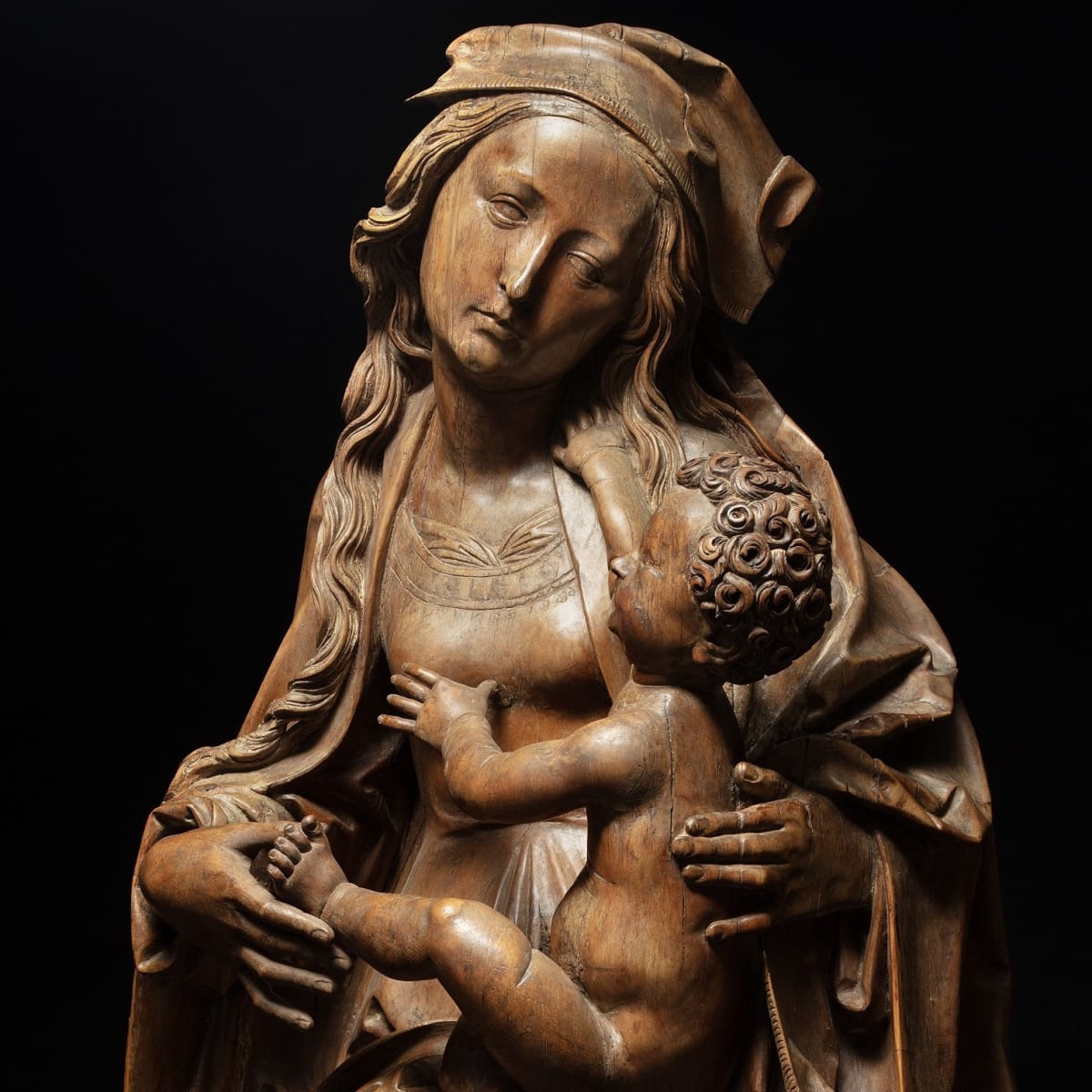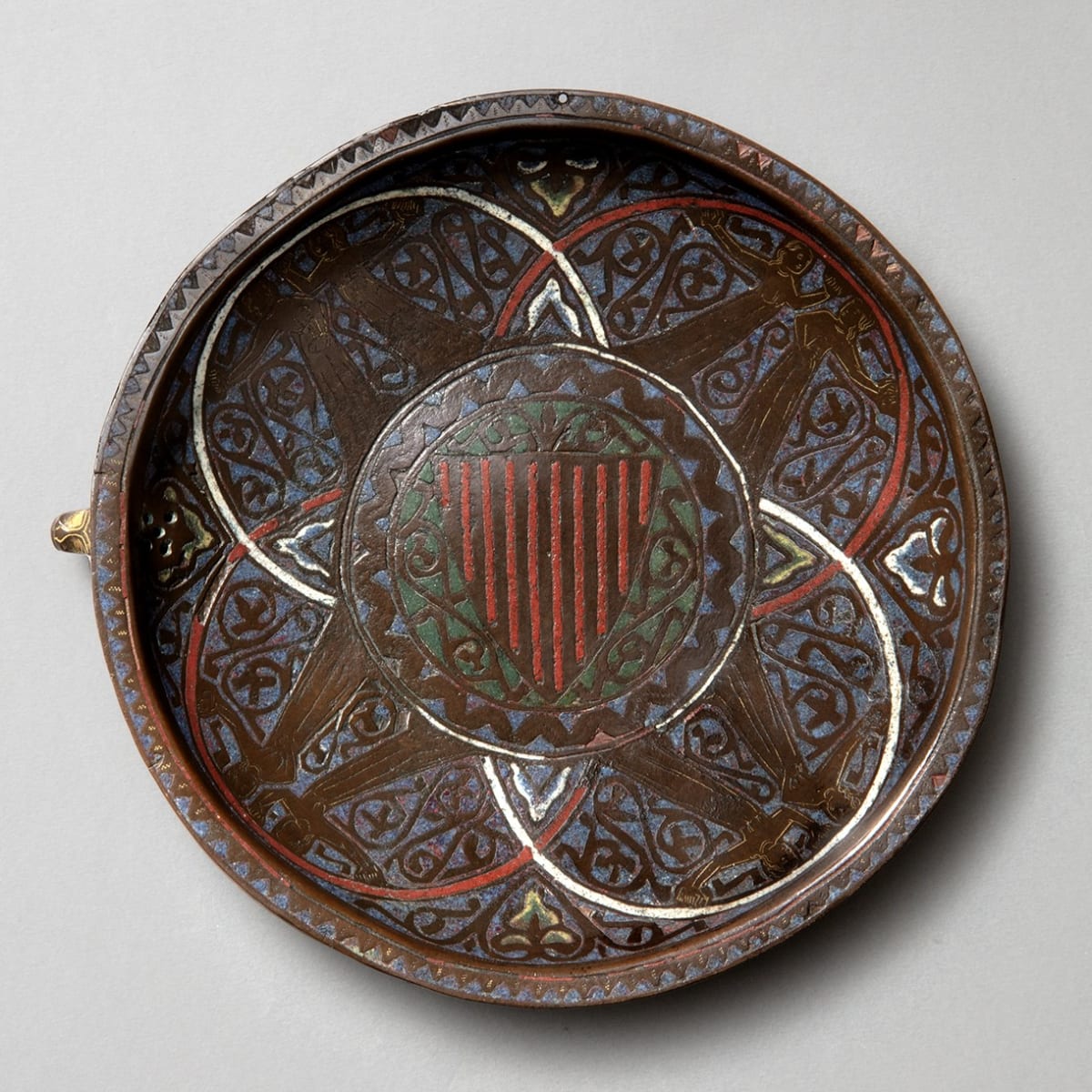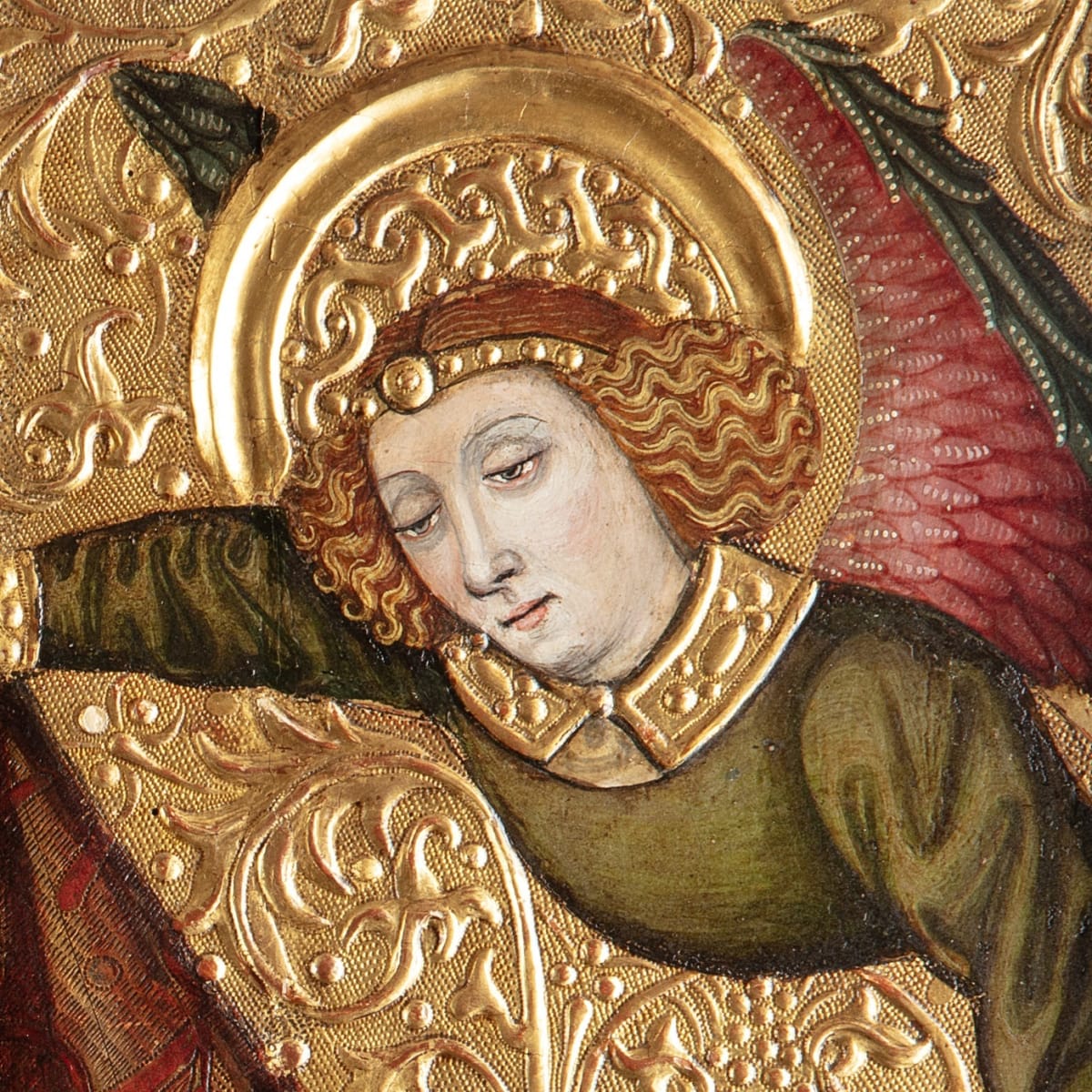


Samson rending the Lion's jaws
Only around 120 boxwood micro-sculptures of any kind from the Middle Ages are known to have survived, the vast majority of which are now in the world’s greatest museum collections. This preciously-scaled example has only recently come to light. Its design, with a figure that measures only 8 cm in height from head to foot, was meticulously and ingeniously conceived so as to make full use of its intended function as a hand-held object of wonder and enjoyment. It is fully worked in the round, a composition so full of torsion and dynamism with its twisting bodies and dramatic, arrested movement that it invites constant turning in the hands. Every detail is considered from a 360-degree viewing angle, and at no point is the refinement of its carving reduced or economised. It shares close stylistic and technical affinities with a small number of figurative boxwood micro-sculptures thought to have been carved in the early decades of the sixteenth century for the Kunstkammers of wealthy noble and mercantile patrons. Several of these, today split between the Victoria and Albert Museum in London and the Rijksmuseum in Amsterdam, have been compellingly localised by modern scholars to the Duchy of Cleves, a powerful medieval dukedom straddling the northern stretch of the Rhine Valley.
